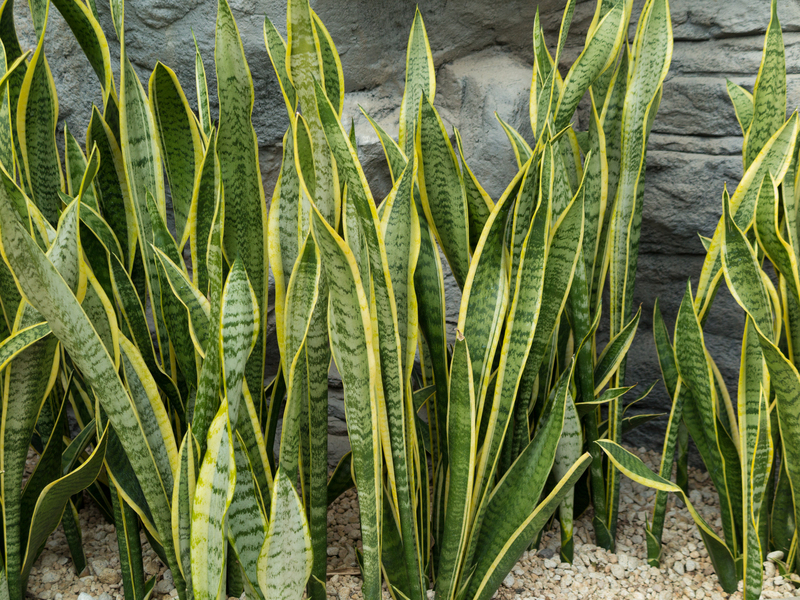Maintain a Gorgeous Lawn All Summer by Avoiding Drought Stress
Are you dreaming of a lush, green yard that becomes the envy of your neighborhood, even during the hottest months? If so, learning how to maintain a gorgeous lawn all summer by avoiding drought stress is critical. Whether your region is prone to dry spells or you simply want your grass to stay resilient, the right strategies will help your lawn survive--and thrive--through summer stressors.
Understanding Drought Stress in Lawns
Before tackling solutions, it's important to recognize what drought stress looks like for your grass. Drought stress occurs when your lawn lacks adequate moisture to support healthy growth. During the heat of summer, high temperatures and extended dry periods can cause even the most beautifully maintained lawns to show signs of stress.
Common Signs of Drought Stress
- Discoloration: Grass turning from vibrant green to bluish-gray or even brown.
- Footprint Tracking: Your footsteps linger as the grass doesn't spring back quickly.
- Wilting or Curling: Grass blades curl lengthwise or look wilted.
- Thinning: Sparse patches or thin areas in your lawn.
- Stunted Growth: Grass stops growing or grows extremely slowly.

Top Tips to Maintain a Gorgeous Lawn All Summer by Avoiding Drought Stress
Maintaining a thriving lawn during dry spells doesn't have to be tough. With these proven tips and techniques, you can avoid drought stress and ensure your lawn stays beautiful all season.
1. Choose Drought-Resistant Grass Varieties
One of the best ways to maintain a gorgeous lawn all summer is to start with grass species suited to your climate. Some varieties naturally tolerate heat and limited water better than others. Consider:
- Bermuda grass
- Zoysia grass
- Tall fescue
- Buffalo grass
- St. Augustine (especially in warmer, coastal regions)
Research the varieties that perform best in your region and consult with local garden centers for expert advice. If you are planning to reseed or overseed, select drought-tolerant types for long-term resilience.
2. Water Wisely and Effectively
Efficient watering is one of the keys to maintaining a gorgeous lawn and helping your grass recover from or avoid drought stress. Improper watering routines often contribute to shallow root systems and weak lawns.
- Deep, Infrequent Watering: Irrigate deeply so the water penetrates at least 6 inches underground. This encourages deep root growth, making your lawn more drought-resistant.
- Water in the Early Morning: Aim to water between 4 AM and 9 AM. Early watering reduces evaporation and fungal growth.
- Adjust for Rainfall: Use rain gauges or smart irrigation systems to avoid overwatering or underwatering based on recent weather.
- Avoid Evening Watering: Wet grass overnight increases fungal risk and wastes water through evaporation.
- Use Mulch or Compost: Organic matter helps retain soil moisture for longer.
Tip: To check if your lawn has received enough water, push a screwdriver into the soil. If it slides in easily, you've watered enough.
3. Optimize Your Mowing Habits
The way you mow in summer can significantly affect your lawn's ability to withstand drought stress. Keep these mowing tips in mind:
- Raise Your Mower Blade: Never cut more than 1/3 of the grass height. Taller grass shades the soil, reduces evaporation, and develops deeper roots.
- Keep Blades Sharp: Dull blades tear the grass, causing stress and making it more vulnerable to drought.
- Rotate Mowing Patterns: Change directions each time you mow to prevent soil compaction and promote even growth.
- Avoid Mowing During Drought Stress: If your lawn is dormant or visibly stressed, mow less frequently and avoid unnecessary stress.
4. Apply Natural Fertilizers Appropriately
Fertilizing your lawn during the wrong period can actually increase drought stress. When choosing fertilizers and scheduling applications, remember:
- Use Slow-Release Formulas: These feed your lawn gradually and prevent flushes of growth that demand more water.
- Fertilize in Spring or Early Fall: Avoid applying high-nitrogen fertilizers during the heat of summer.
- Incorporate Organic Matter: Compost and natural amendments improve soil's water-holding capacity and reduce stress.
- Test Your Soil: Regular soil tests help determine if any essential nutrients are lacking before applying fertilizers.
Pro Tip: Consider using products labeled as "summer-safe" or formulated for heat-stressed lawns.
5. Improve Soil Health for Drought Resilience
Healthy soil is the foundation for a drought-resistant lawn. Compacted or poor soil makes grass roots shallow and weak, which leaves them vulnerable during summer. Steps to improve your soil include:
- Aerate Your Lawn: Aeration relieves compaction, encourages root growth, and allows water/nutrients to penetrate more easily.
- Add Organic Matter: Regularly top-dress with compost or well-rotted manure to retain soil moisture and support beneficial microbes.
- Correct Soil pH: Grass struggles in overly acidic or alkaline soils. Use lime or sulfur as needed based on soil test results.
- Enhance Drainage: If you notice puddling, work to improve drainage through soil amendments and leveling.
6. Reduce Lawn Stress and Foot Traffic
During high heat and dry spells, your lawn is more fragile. Help it recover by:
- Limiting Heavy Foot Traffic: Restrict playtime, parties, and equipment use during drought-sensitive periods.
- Rotating Activity Areas: If you have regular gatherings, move locations occasionally to reduce concentrated stress zones.
- Improving Shaded Areas: Prune trees and shrubs to allow more light in while still protecting your lawn from extreme afternoon sun.
7. Encourage Deep Root Systems
Lawns with deep, robust root systems are the most effective at resisting drought stress. Encourage root development by:
- Following Deep Watering Practices: As previously mentioned, infrequent but heavy watering is key.
- Avoiding Excessive Fertilization: Too many nutrients cause rapid growth at the surface, weakening roots below.
- Eliminating Thatch: Excess thatch (a layer of dead grass and roots) blocks water, air, and nutrients. Remove thatch annually if it exceeds 1/2 inch thick.
Natural and Smart Solutions for Drought-Proof Lawns
Modern technology and natural landscaping practices offer convenient ways to maintain a gorgeous lawn all summer by avoiding drought stress:
- Smart Irrigation Controllers: Use Wi-Fi sprinklers or soil moisture sensors to adjust watering schedules based on real-time weather and soil data.
- Rain Barrels: Collect and store rainwater for lawn irrigation, reducing reliance on municipal supplies.
- Mulch Borders and Flower Beds: Mulch helps regulate soil temperature and retains moisture, safeguarding root systems at the margins of your lawn.
- Native Ground Covers: Blend your grass lawn with native, drought-tolerant ground covers for a more resilient landscape overall.
What Steps to Take if Your Lawn Is Already Suffering from Drought Stress?
Don't panic if you notice the first telltale signs of drought stress. Instead, take these restorative steps to help your turf bounce back quickly:
- Pause All Fertilizing: Hold off on any fertilizer applications until the grass is visibly recovering and active growth resumes.
- Water Deeply and Soak Slowly: Apply water slowly so it penetrates, not runoff. Continue this twice weekly, based on weather conditions.
- Refrain from Mowing: Limit mowing to avoid additional stress, and never cut the grass short while it's recovering.
- Avoid Herbicides and Pesticides: These can worsen stress, so wait until conditions improve before using them.
Be patient--grass often enters a dormant state during drought and can rebound when conditions improve, as long as the root systems are intact. If most grass blades are brown but you still spot green at the base, your lawn has a good chance of full recovery.
Additional Pro Tips to Maintain a Gorgeous Lawn All Summer by Avoiding Drought Stress
- Monitor Weather Patterns: Stay ahead of heatwaves and adjust your lawn care routine based on the forecast.
- Diversify Your Landscaping: Consider integrating beds, trees, and mulched areas to reduce your lawn's total area without sacrificing curb appeal.
- Commit to Consistency: Sporadic care creates health fluctuations. Set a summer lawn care schedule and stick to it.

Frequently Asked Questions on Summer Lawn Drought Stress
How often should I water my lawn during a drought?
Answer: Water deeply (1 to 1.5 inches per session) once or twice weekly. Avoid daily sprinkling, which encourages shallow roots.
Can brown grass recover after drought?
Answer: Yes--if the crowns and roots are healthy, most lawns will green up again when watering resumes. However, severe or prolonged drought can kill patches, requiring overseeding for full restoration.
Is frequent mowing good for drought-stressed lawns?
Answer: No. Mowing too frequently or too short stresses turf even further. Allow grass to grow taller and mow only when necessary.
Does aerating help with drought?
Aerating relieves compaction and improves water/nutrient uptake, making your grass more drought-resistant.
Conclusion: Enjoy a Lush Lawn All Summer Long
A beautiful, vibrant lawn during the summer requires more than just watering--it demands smart, proactive care and a keen eye for stress signals. By following these essential tips--choosing the right grass, watering efficiently, mowing wisely, and fostering healthy soil--you can enjoy a healthy landscape throughout the hottest months.
Stay vigilant, make small adjustments based on your local climate, and you'll be able to maintain a gorgeous lawn all summer by avoiding drought stress, transforming your yard into a resilient, stunning summer sanctuary.